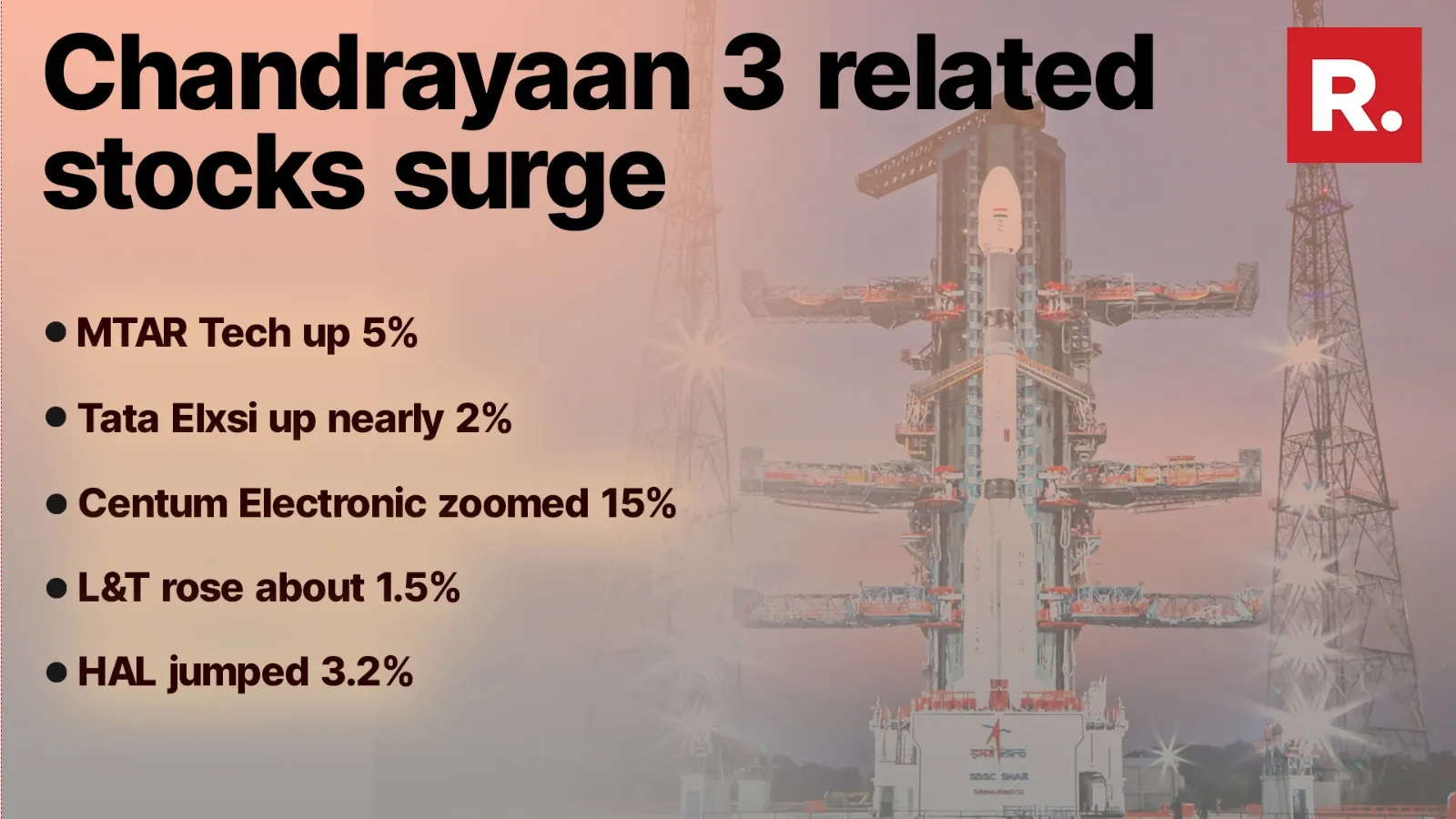In September 2019, PM Modi was seen embracing and consoling the former chief of the Indian Space Research Organisation. The scientist struggled to hold back his tears as the space agency lost touch with Chandrayaan- 2 lander Vikram.
Cut to chase, on 23rd August, the Chandrayaan-3 spacecraft arrived at the Moon’s surface on Wednesday, after a 41 day’s journey. Thus, realizing the goal of 140 crore Indians.
India became the fourth country to perfect the technology of soft lunar landing, after the United States, China, and Russia.
Apart from contributing to the nation’s list of scientific achievements, the success of Chandrayaan-3 provided India’s space industry another reason to rejoice and celebrate. The shares of the companies which provide tools and materials to the space industry rose up to 15%, prior to the landing. On Wednesday, August 23, these companies’ market value increased by about Rs 13,000 crore in a single day.
Exploring the Companies Whose Shares Soared after Chandrayaan-3’s Triumph.
According to ET, Hindustan Aeronautics, which made the Lander Module “Vikram” for Chandrayaan-3, saw a 3.5% increase on Wednesday. The Indian Space Research Organisation (ISRO) receives systems from Centum Electronics, whose stock increased 14% on Wednesday. Godrej Industries saw a 7% increase when its subsidiary Godrej Aerospace supplied parts to ISRO. Linde India has increased by more than 23% this week among other spacecraft suppliers, and BHEL has increased by over 10%.
Aside from Bharat Heavy Electricals, which lost Rs 539.7 crore in market value yesterday, other companies that saw increases include Centum Electronics, Godrej Industries, Paras Defence, MTAR Technologies, Hindustan Aeronautics, Mishra Dhatu Nigam, Linde India, Larsen & Toubro, and Avantel. The total increase in the market value of the nine Indian space sector stocks yesterday was close to Rs 13,900 crore.
The Road Ahead.
A survey by the Indian Space Association (ISpA) and EY showed that India’s space economy is expected to increase to roughly $13 billion by the year 2025, rising from the $9.6 billion mark of 2020 at a CAGR of 6%.
According to reports, the global space economy has grown dramatically, reaching a value of USD 546 billion in 2023, i.e. a phenomenal 91 per cent rise over the previous ten years. With its ambitious projects, India is positioned to be a key player in this rapid expansion.
India’s space industry, which is anticipated to be worth USD 13 billion by 2025, could benefit considerably from Chandrayaan-3’s success. This stimulus can spur the creation of jobs, promote private investment, and support the expansion of the nation’s space-tech ecosystem.





